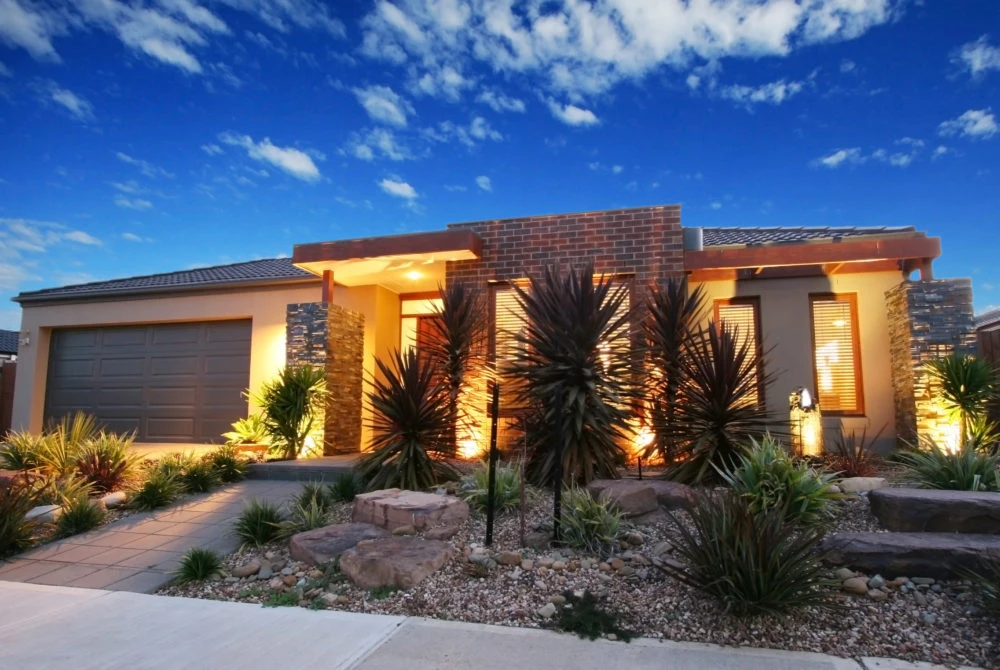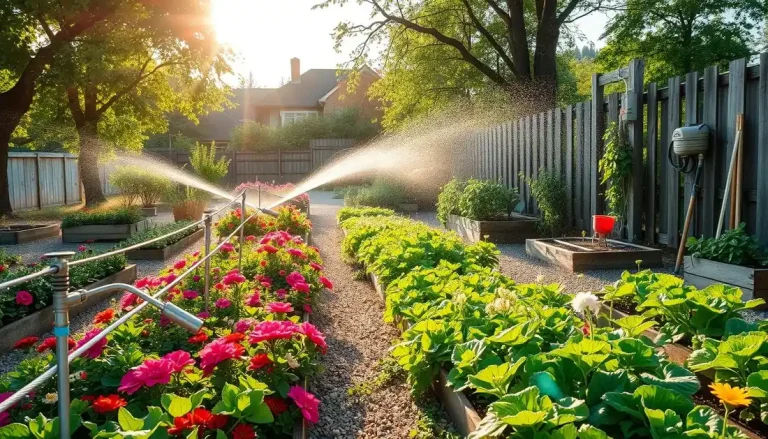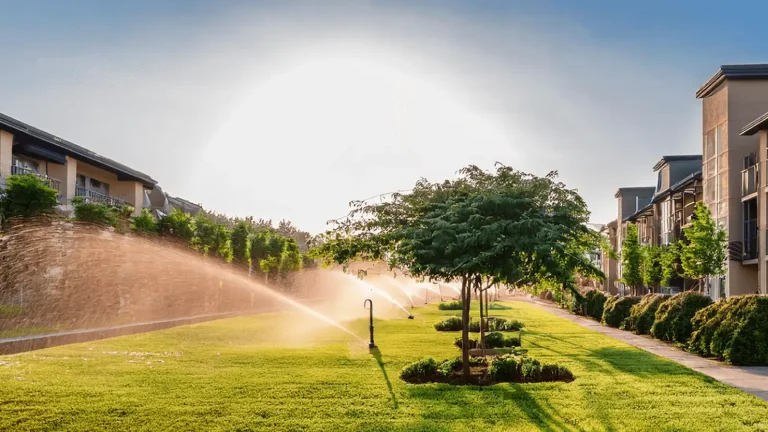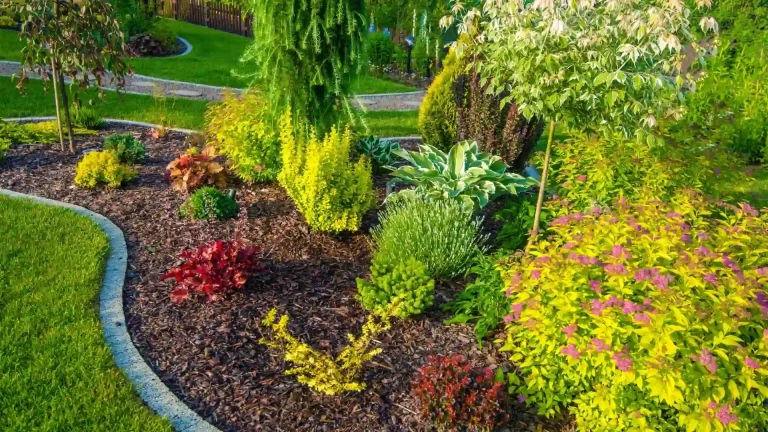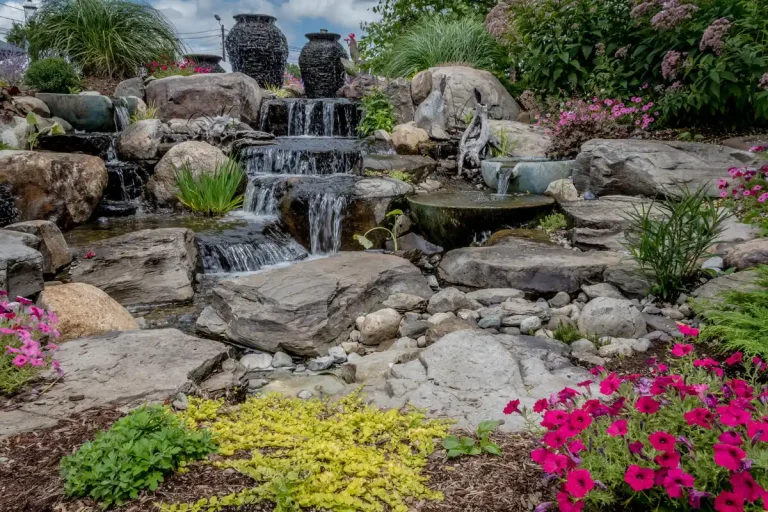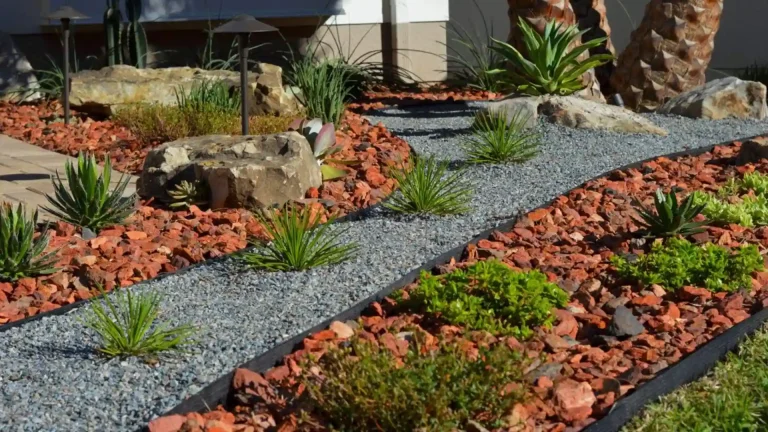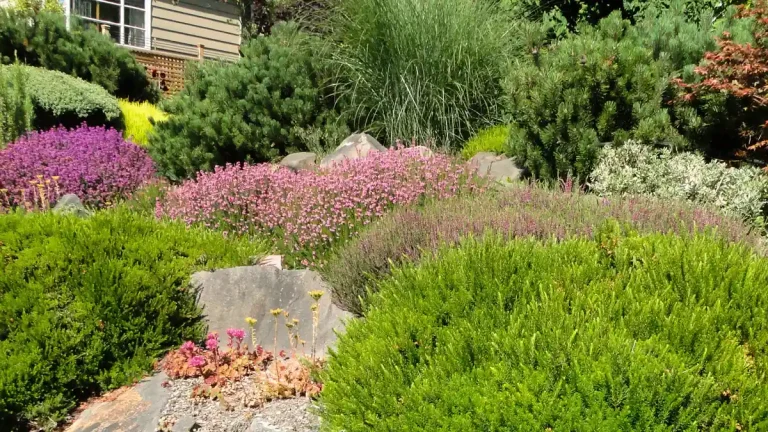High‑End Water Conservation Landscaping Solutions: Luxury Systems & Strategies
The Imperative for Luxury Water Conservation in Landscapes
As climate volatility grows, water becomes a limiting, costly, or even regulated resource. Luxury landscapes often featuring lush plantings, hardscape, and design elements can either become liabilities or models of sustainable elegance. Integrating advanced water-conservation into high-end design ensures that a garden remains visually stunning and ecologically responsible.
Beyond conservation, these systems reduce maintenance costs, improve resilience, and can add market value. In many jurisdictions, water agencies or municipalities now reward or even require efficient landscaping systems as part of new construction permits. High-end landscapers treat water as a design material, routing, storing, and delivering it as intentionally as one arranges stones or lighting.
These systems are not simply about cutting water usage; they are about achieving a balance: maintaining lushness, delivering features (e.g, pools, ponds, specimen plantings), and doing so with precision. The “luxury” aspect comes from seamless integration, high reliability, aesthetic concealment of infrastructure, and smart automation.
Core Strategies & Design Principles
Holistic Water Capture & Redistribution
Every drop entering the property from rain, greywater, or runoff should be treated as a resource. Use roofs, terraces, and hard surfaces as catchment. Channel runoff into cisterns, swales, or infiltration basins. Use green roofs or living walls to capture rainfall and buffer peak flows.
Within the design, contouring (e.,g. keyline design) can guide water to higher-use planting zones. Terraces, berms, and micro-catchments slow water, letting it sink.
Precision Irrigation & Smart Systems
The backbone of luxury water conservation is precise water delivery: drip lines, micro-irrigation, pressure-compensated emitters, subsurface tubing, smart controllers, soil moisture sensors, and weather‑adjusting timers. These reduce waste from runoff, overwatering, or evaporation.
Technologies like smart controllers that adapt based on forecast or real-time soil moisture can lower water use by 20–30 %.
Permeable Hardscapes & Water‑Friendly Surfaces
Luxury doesn’t mean impermeable. Use permeable pavers, gravel, permeable concrete, decomposed granite, or other “open” surfaces that allow infiltration. These reduce runoff and harness stormwater.
Design steps, such as directing overland flow into plant zones or infiltration areas, ensure that even heavy rains become resources, not drainage problems.
Mulching, Soil Enhancement & Evaporation Barriers
High-quality mulches, soil conditioners, and even advanced coatings (e.g., superhydrophobic sand layers) reduce surface evaporation and preserve moisture in the root zone.arXiv
Organic mulches moderate soil temperature, suppress weeds, and gradually improve soil structure. Living ground covers can act as “green mulch.”
Reuse Systems: Greywater, Rainwater, Folkewalls
Greywater systems (recycling household water) can supply irrigation for ornamentals. Rainwater cisterns or barrels buffer dry periods. A novel example is the Folkewal,,l a vertical planted wall that purifies greywater and returns it for reuse.
These reuse systems reduce reliance on municipal water and make more of the on-site water available to your garden.
Five Example Products / Systems for Luxury Water Conservation
Here are real-world products or system components you can integrate into a high-end conservation landscape. Each is described in depth.
1. Micro Drip Irrigation Kit
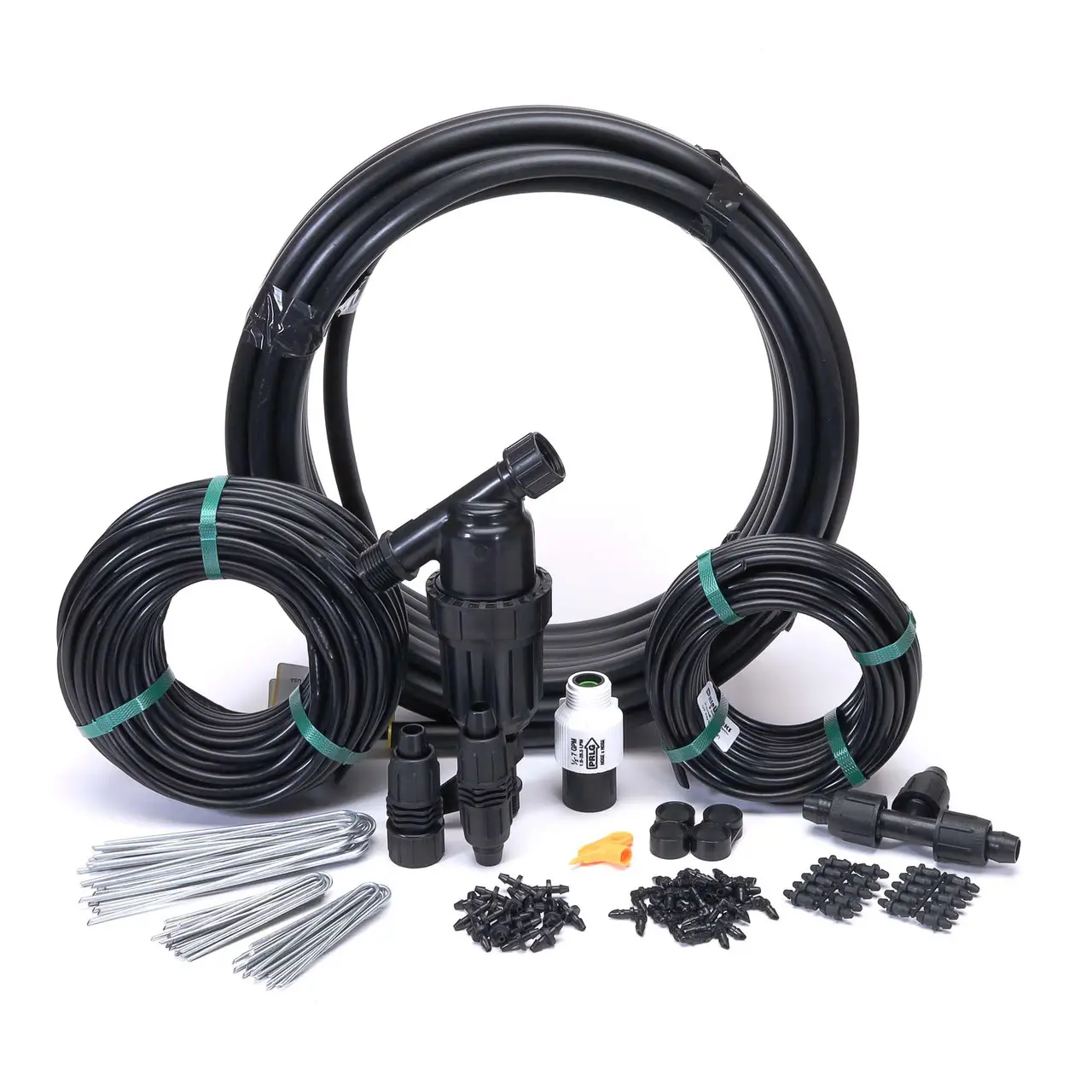
This Kit includes tubing, micro-emitters, connectorsstakes, S, Ss, and adaptors, built for precision watering in fine gardens. It allows you to deliver the exact amount of water each plant needs, directly to its root zone, reducing waste and evaporation.
-
Details & features: adjustable emitters, pressure regulation, modular expandability, leak‑resilient tubing.
-
BenefitsWhenen concealed beneath mulch or under gravel, it preserves the clean luxury aesthetic while operating invisibly.
-
Use case: in a mixed specimen bed of shrubs, perennials, and ornamental grasses, you can program micro-emitters for each plant type. This helps maintain lushness without overwatering adjacent zones.
-
Why needed: Sprinklers or overspray wastewater cause soggy soil or stain paving. Micro drip gives control.
2. Metal Rainwater Collection Diverter
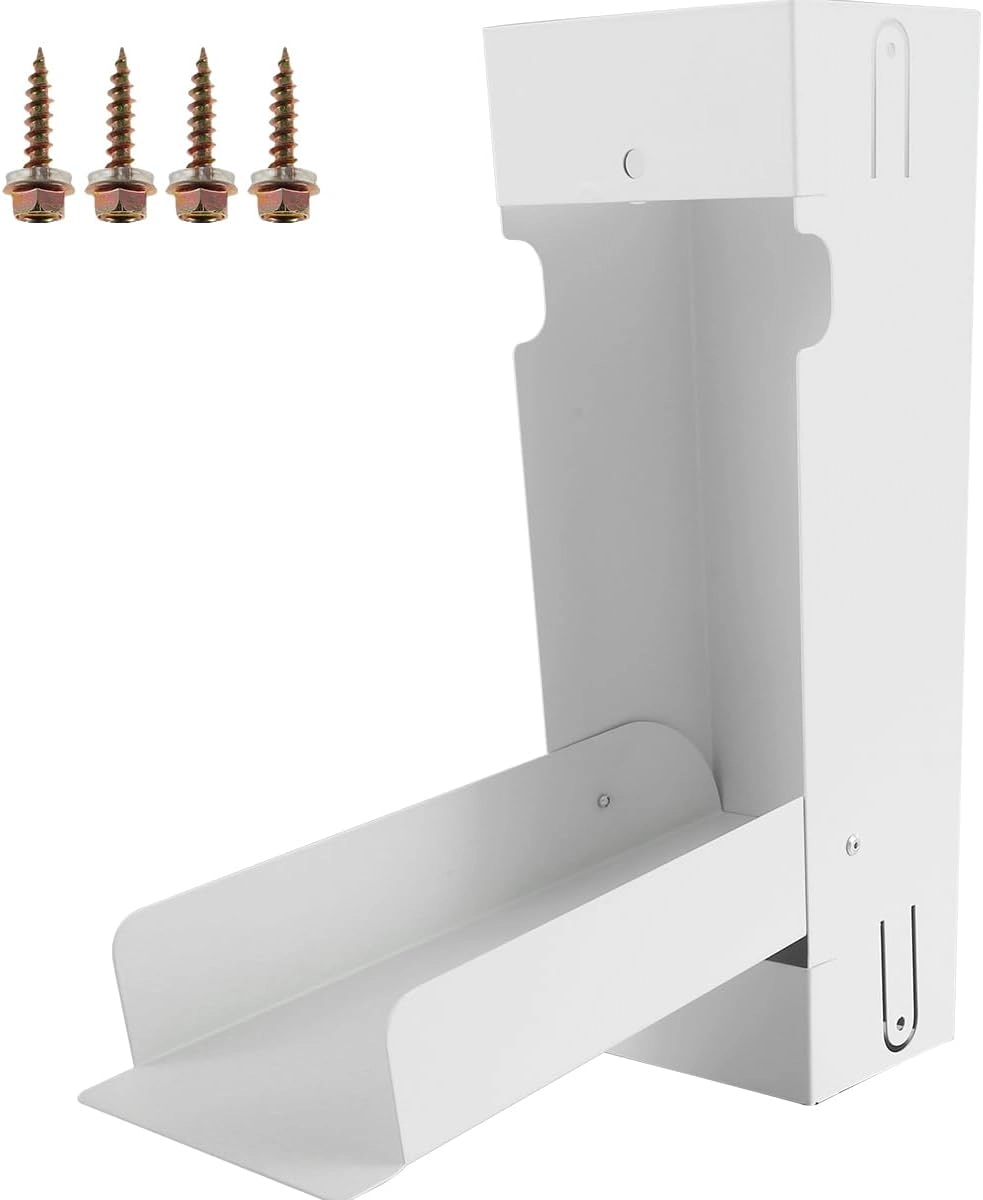
This Diverter installs on a downspout to route precise amounts of water into a barrel or storage system. It helps harvest roof runoff efficiently.
-
Details: durable metal housing, flow control, overflow bypass to continue downspout flow when the barrel is full.
-
Benefits: captures clean water for irrigation, reduces storm load, and integrates elegantly with gutter systems.
-
Use case: from the roof of a luxury home, neatly divert to cisterns or underground tanks to feed irrigation or ornamental water features.
-
Why needed: The reliability and aesthetics of the diverter matter in high-end installations; cheap plastic diverters often fail or look out of place.
3. Efficient Water Timer Sprinkler
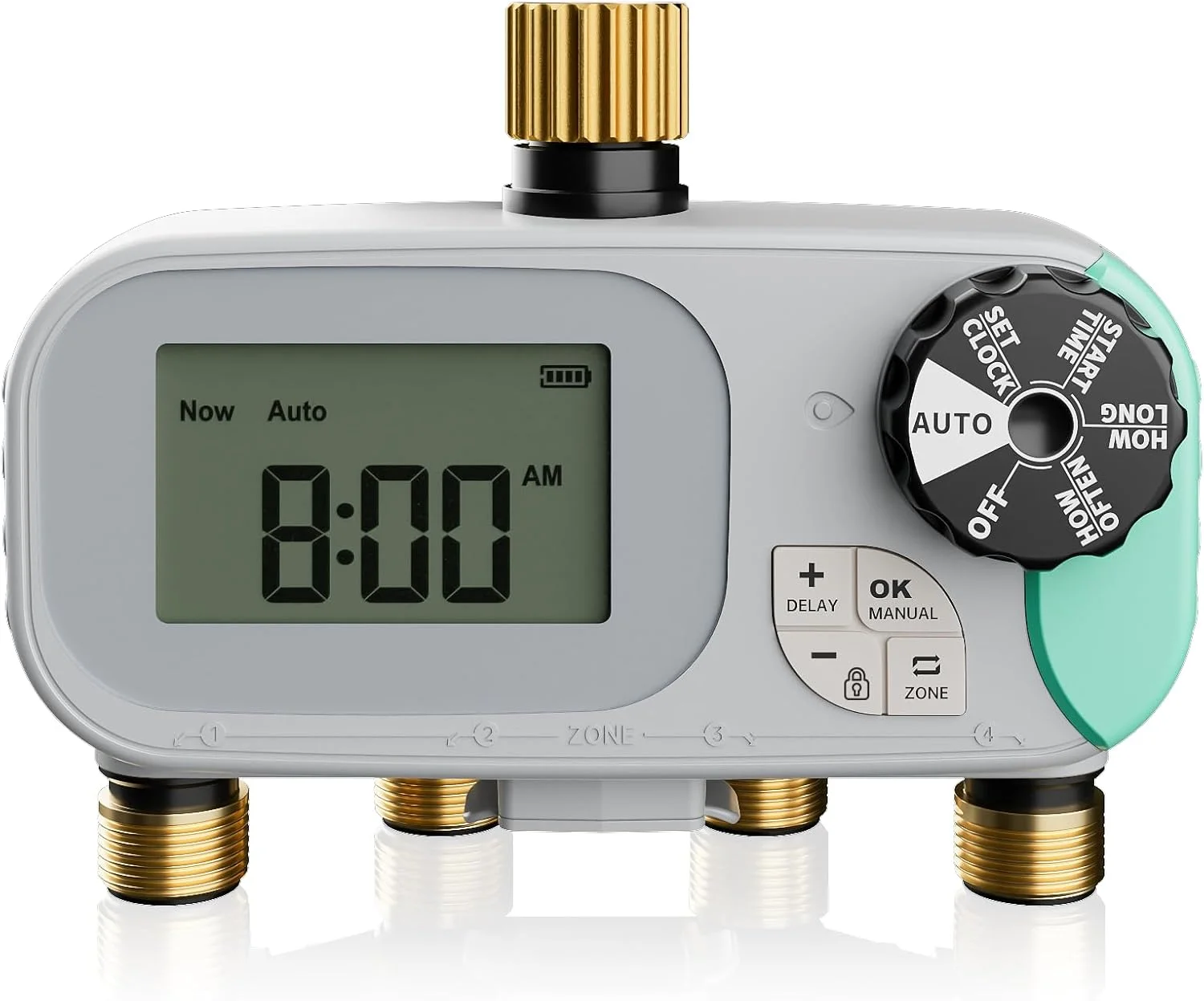
This is a Smart Irrigation Timer/scheduler (often Bluetooth or Wi-Fi enabled) that governs watering schedules, adjusts for rainfall, and optimizes cycle/soak phases.
-
Details: multiple programming zones, weather-based skip, remote control, battery or wired power.
-
Benefits: removes human guesswork, optimizes the watering window (e.g, overnight), reduces waste, and even retrofits to existing systems.
-
Use case: controlling upscale irrigation zones for lawns, ornamental beds, and specimen trees under one unified system.
-
Why needed: Even a premium irrigation network fails if the scheduling is poor. Having an intelligent controller is essential.
4. Garden Water Conservation Barrels & Connectors
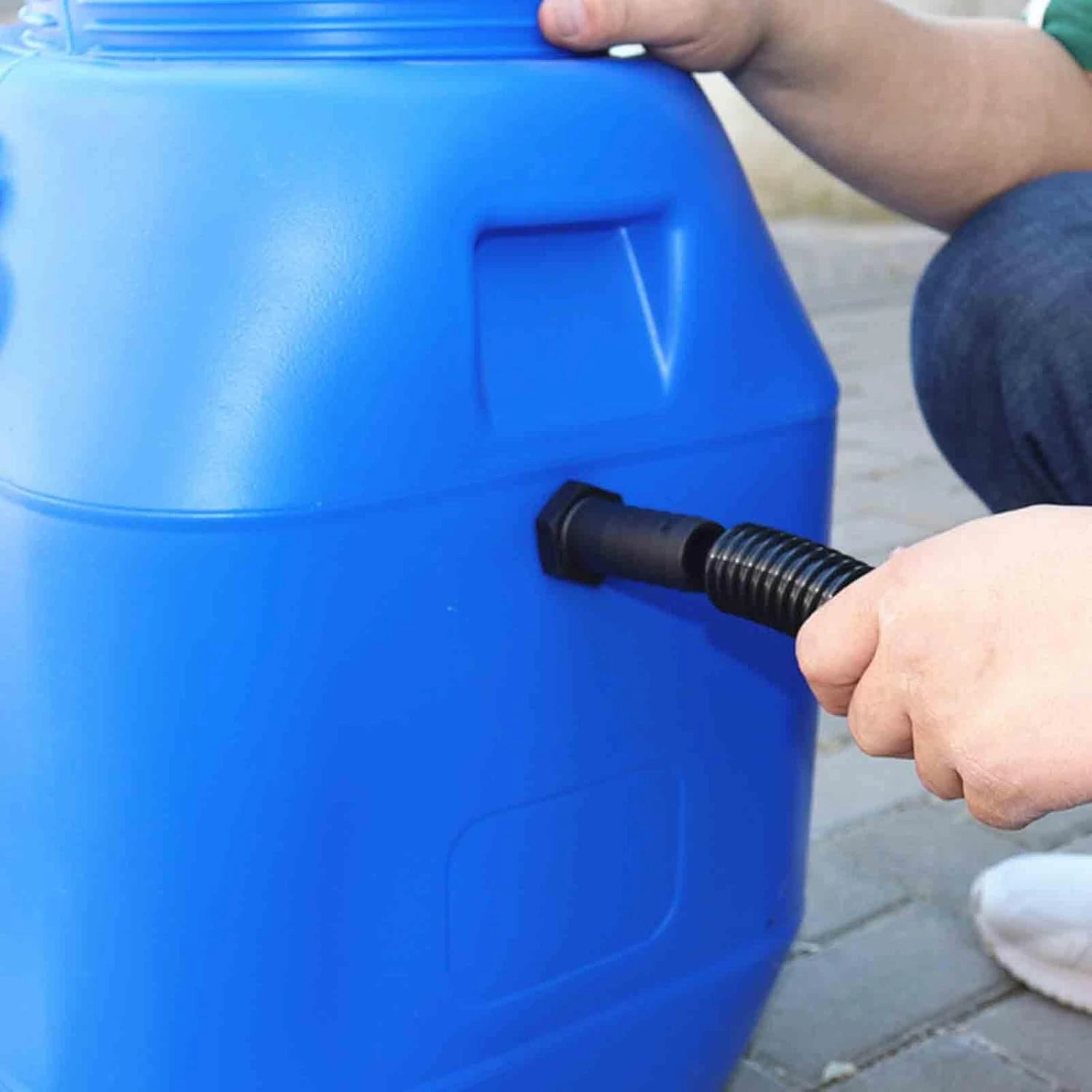
This set comprises Water Storage Barrels and Connectors for linking multiple tanks or integrating with downspouts.
-
Details: modular barrels (200–1000 L), connectors, overflow routing, taps, a nd lid screens.
-
Benefits: scales to property size, ensures water supply in dry spells, aesthetically integrates into plant zones, or concealed cistern banks.
-
Use case: a luxury garden may use multiple barrels chained along gutter runs, feeding into drip lines or irrigation zones during dry months.
-
Why needed: Municipal water is costly or restricted; onsite storage gives autonomy and resilience.
5. Eco‑Friendly Water‑Saving Garden Watering Can (3 L)
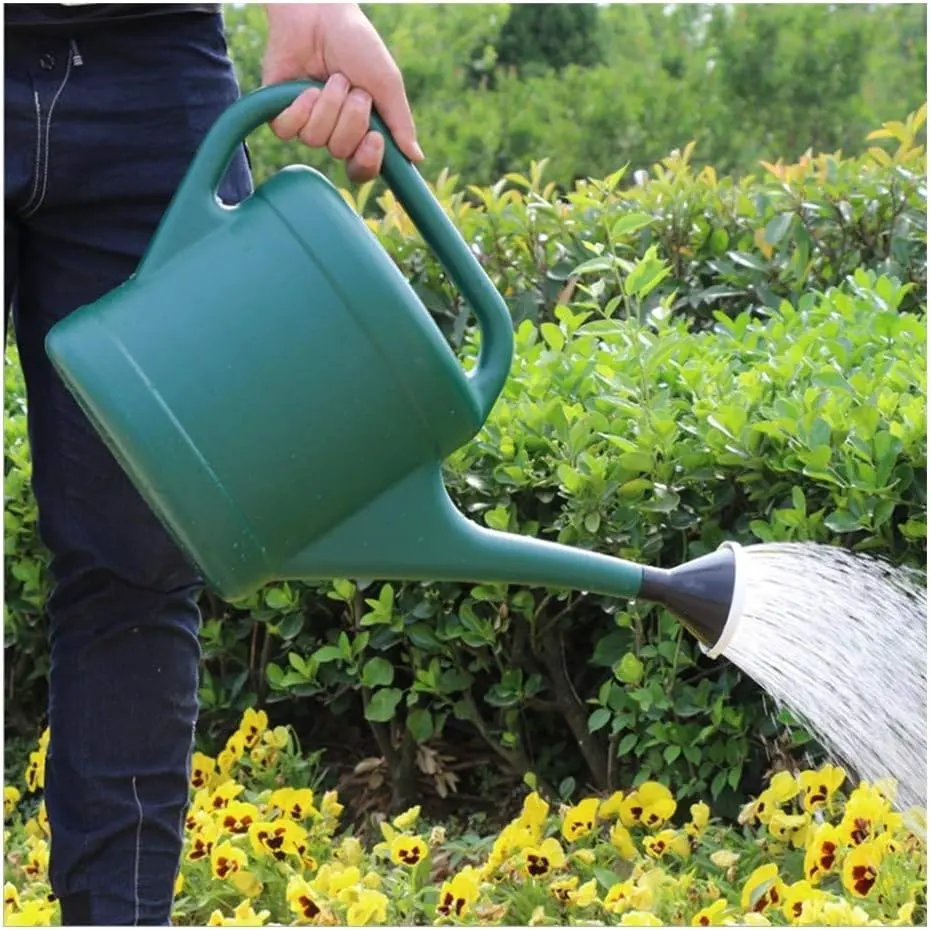
Though simple, a Premium Watering can made for efficiency still has its place, especially for container plantings, bonsai, or fine-detail watering zones.
-
Details: ergonomic design, efficient spout, measured volume, durable material.
-
Benefits: precise, no overspray, useful for tender plants or manual spot watering.
-
Use case: in luxury patios, container gardens, or specialty beds, use this can to supplement drip systems or during drought restrictions.
-
Why needed: Even in high-end systems, some zones demand manual touch or are outside automated coverage.
Benefits in Detail: Why These Solutions Are Worth It
Water Efficiency & Cost Reduction
High-end systems often achieve dramatic water savings (20–60 % or more) compared to conventional sprinklers. Drip systems, smart timers, and capture systems ensure every liter is used wisely.
This means lower water bills, less strain on municipal infrastructure, and fewer penalties under drought regulations.
Plant Health & Resilience
Precise moisture delivery reduces stress, avoids root rot or drought shock, and encourages deep root development. Smart controllers respond to real-time conditions, preserving plant vigor. Overwatering and under-watering are minimized.
Aesthetic Integration & Infrastructure Concealment
In high-end landscapes, visible pipes, hoses, or drip lines detract from elegance. Premium systems are hidden under mulch, under paving, or within structural features. Components like diverters, barrels, and controllers are either concealed or finished to match architectural aesthetics.
Long-Term Reliability & Low Maintenance
Luxury-grade components are designed for durability, resistant to corrosion, clogging, UV exposure, and frequent use. Fewer leaks, blockages, or failures reduce maintenance costs and preserve the design integrity over the years.
Environmental & Regulatory Alignment
These systems help reduce stormwater runoff, recharge groundwater, and reduce the burden on municipal supply. They often align with local regulations, incentives, or green building certifications.
They also position the landscape as an environmental statement, beautiful, sustainable, and forward-looking.
Use Cases: Solving Problems with Premium Solutions
Use Case A: Luxury Home Facing Water Restrictions
A high-end estate wants to maintain a lush garden under strict watering limits. The design installs micro drip irrigation (using the Micro Drip Kit), controlled by a smart timer (Efficient Water Timer). Roof runoff is captured with diverters and barrels, feeding into storage tanks and then reused. The result: the garden stays vibrant and compliance is met.
Problem solved: Water rationing, overuse penalties, and plant decline are mitigated without sacrificing aesthetics.
Use Case B: Estate with Significant Runoff & Drainage Challenge
A property with slope and heavy impervious surfaces suffers from runoff. Designers shape contour swales and direct downspouts via diverters to cisterns and infiltration zones. Permeable paving and soil-mulch layers buffer flows. Smart irrigation ensures that captured water is reused.
Problem solved: Instead of losing water to drains, the system recycles it, controls erosion, and powers irrigation sustainably.
Use Case C: High-End Public or Commercial Landscape
A corporate campus wants a water-smart instantiation of luxury landscaping (lawns, specimen plantings, plazas). They deploy precision irrigation, modular barrels, sensor networks, and reuse strategies. All infrastructure is buried or integrated into the design so guests see only green and stone, not pipes.
Problem solved: Aligns visual prestige with water-efficiency obligations, reducing operating water consumption and enhancing corporate sustainability credentials.
Use Case D: Garden Retrofit for Water Efficiency
An existing luxury property wants to upgrade to modern water conservation without ripping up the entire yard. You retrofit diverters to gutters, add barrels, convert sprinklers to drip with smart controllers, and overlay permeable pathways. The landscapers upgrade the water systems while keeping the landscaping intact.
Problem solved: Minimizes disturbance while delivering efficiency and compliance with new local standards.
How to Buy, Implement & Source These Systems
Steps to acquisition & deployment
-
Audit existing site: analyze water flows, soil, drainage, sun, and contour.
-
Hydrozoning & design: cluster plants by water need; map irrigation zones; set catchment areas.
-
Select premium components: choose systems (drip kits, timers, diverters, barrels) built for durability and design integration.
-
Conceal installation: plan routing under mulch, under paving, or within architectural elements.
-
Program automation: set up timers, sensors, and forecast-based adjustment.
-
Monitor & test: use moisture probes or flow meters, adjust system settings.
-
Maintain infrastructure: flush lines, check valves, clean filters annually, and repair leaks.
Where to buy & affiliate-style linking
-
Micro Drip Irrigation Kit – usually available from specialty irrigation or garden systems suppliers.
-
Metal Rainwater Collection Diverter – gutter and rainwater harvesting supply vendors.
-
Efficient Water Timer Sprinkler – smart irrigation and automation product retailers.
-
Garden Water Conservation Barrels & Connectors – modular rainwater and cistern hardware suppliers.
-
Eco‑Friendly Water‑Saving Watering Can – high-quality garden tool shops.
Also consider local suppliers, irrigation contractors, or specialty green building vendors for design consultation and component sourcing.
FAQ
Q1: Are smart irrigation systems really worth the extra cost?
A1: Yes. Although the upfront investment is higher, smart controllers and precision systems ultimately pay off by delivering significant water savings (20–30% or more), reducing system failures, and promoting more consistent plant health. Over 5–10 years, savings often outweigh the initial cost.
Q2: How do I size and dimension rainwater tanks and barrels for my landscape?
A2: Estimate your roof catchment area and average rainfall, then size storage to cover dry periods plus irrigation demand. A rough rule: roof area (m²) × annual rainfall (mm) gives potential liters; then size the storage to hold a portion based on your needs. Consult local rainfall data, usage projections, and available space.
Q3: Can these systems handle heavy storms or extreme weather?
A3: Yes, if properly designed. Use overflow management, robust piping, pressure regulation, and flood safety. Storage systems must have overflow outlets. Smart systems should be able to skip irrigation post-rainfall. Permeable surfaces and swales ease peak flows. In high-end systems, drainage and overflow get equal design attention as irrigation.
